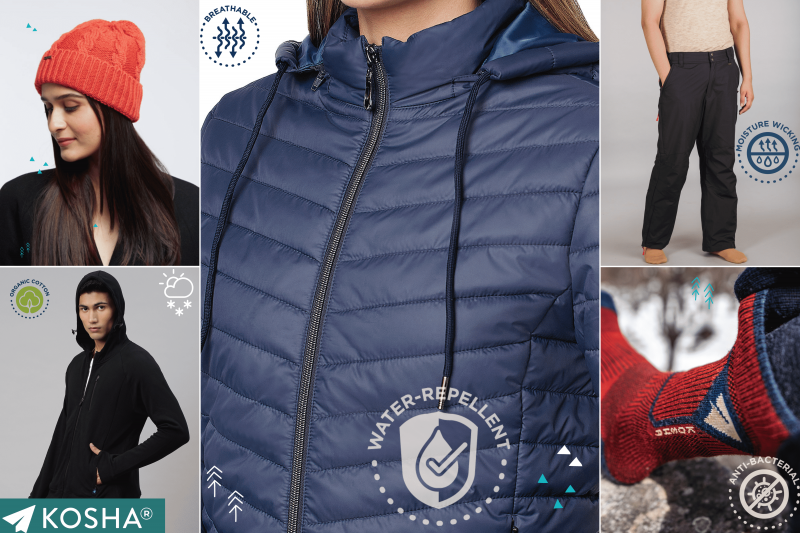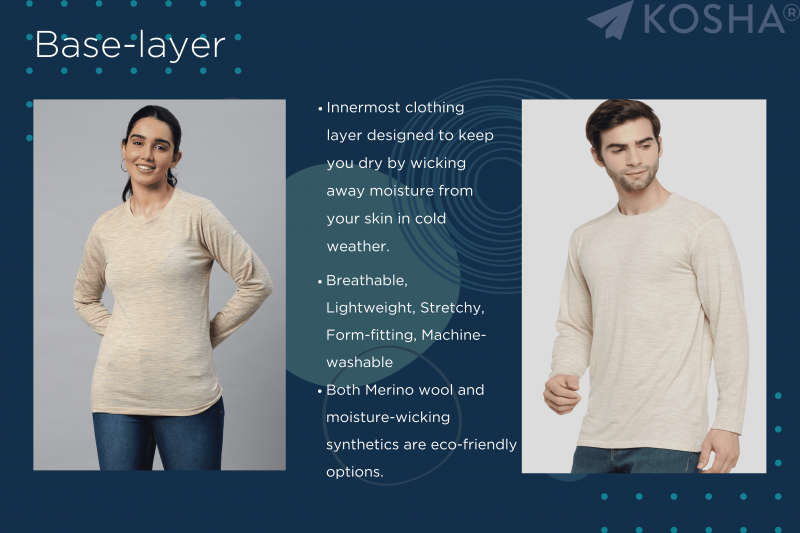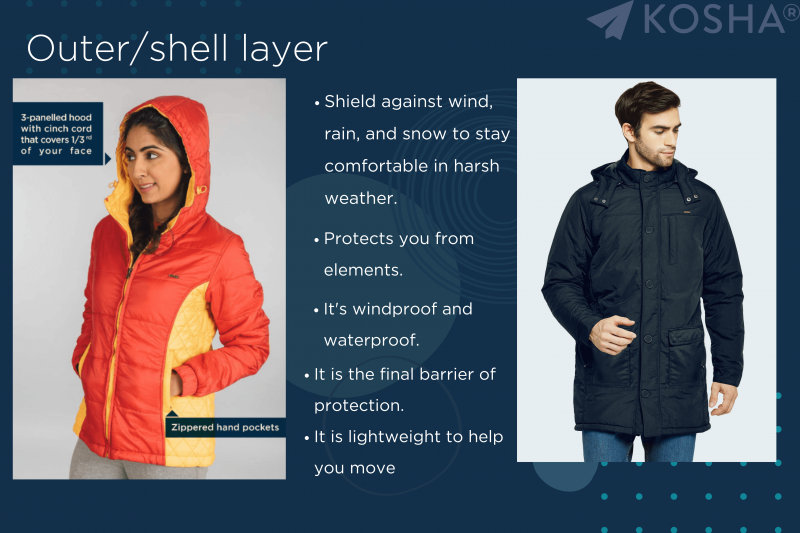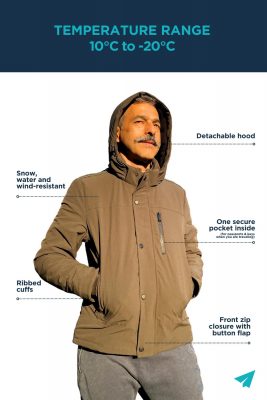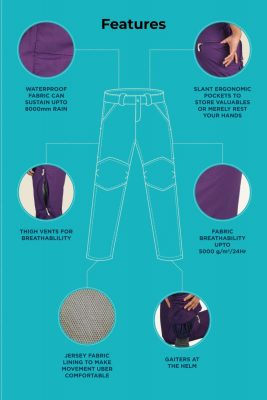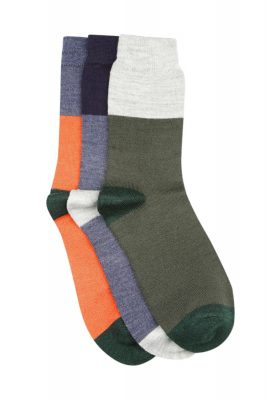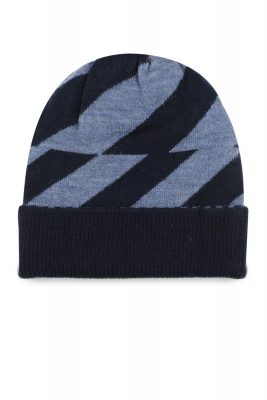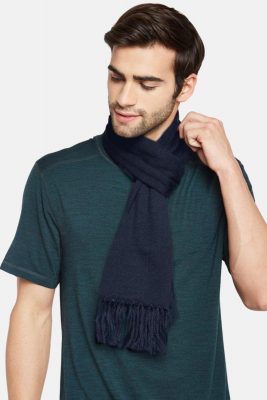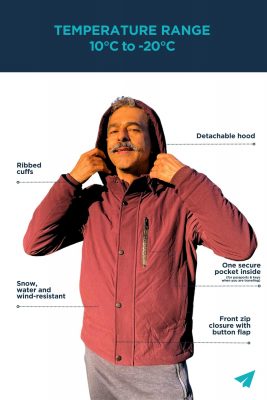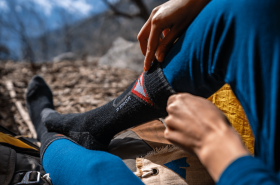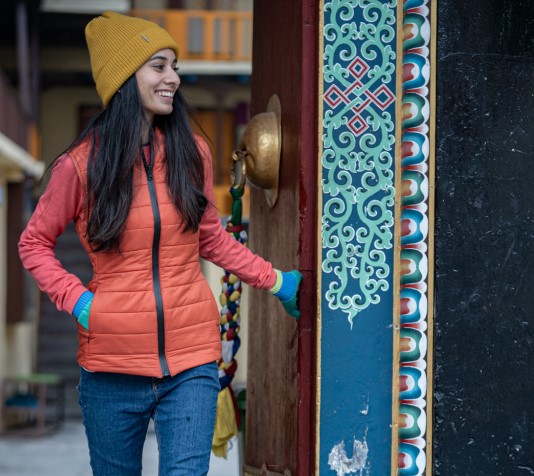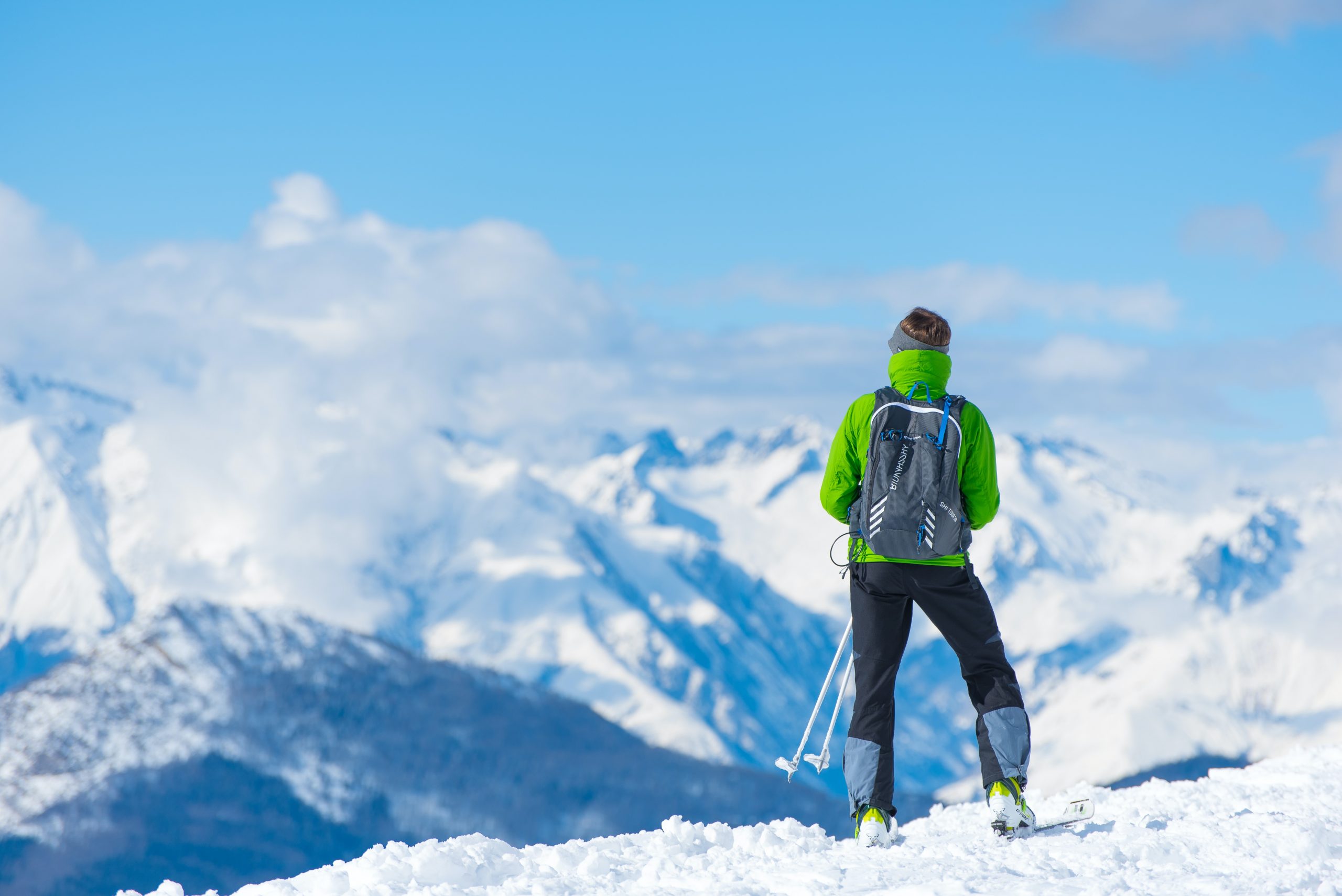
Picture this: a pristine winter wonderland, with glistening snowflakes falling gently around you, and the promise of exhilarating adventures in the cold. However, to fully enjoy the magic of snow, you need more than just enthusiasm – you need the knowledge of how to dress for snow.
Proper snow apparel is not just about staying warm; it’s about embracing the beauty of winter safely and comfortably. In this guide, we will delve into the essential elements of dressing for snow, highlighting the role of sustainable technical apparel in ensuring your winter adventures are not only memorable but also eco-friendly.
Table of Contents
The Role of Sustainable Technical Apparel
Dressing for snow isn’t just about fashion; it’s about functionality, safety, and sustainability. To begin our journey into the world of snow/winter apparel, let’s first discuss the pivotal role of sustainable technical apparel in your winter wardrobe.
Sustainable technical apparel, often referred to as performance or outdoor wear, is specially designed to withstand extreme weather conditions while keeping you comfortable. These garments are equipped with advanced materials and technologies that not only keep you warm but also allow your body to breathe, preventing overheating and discomfort. However, what sets sustainable technical apparel apart is its commitment to environmental responsibility.
In today’s eco-conscious world, sustainable fashion is gaining momentum, and rightly so. Choosing eco-friendly snow apparel not only helps protect the environment but also ensures your gear is built to last, reducing the need for frequent replacements. Look for brands that prioritize sustainable materials, recycling, and ethical manufacturing processes when shopping for snow attire. You can check out Kosha, we are a sustainable and eco-friendly technical winter apparel brand.
Now, let’s dive into the practical aspect of dressing for snow and discover how to assemble the perfect winter outfit that balances style and functionality.
Shop Kosha’s winter technical apparel here
Assessing Your Snow Destination
Before you start packing for your snowy getaway, take some time to assess your snow destination. Different locations have varying winter climates, so it’s vital to know what you’ll be facing. Here’s how to do it:
A. Researching Weather Conditions
The first step is to research the weather conditions at your chosen destination. Check the weather forecast for the dates of your trip, but don’t stop there. Look into historical weather data for the area, especially if you’re planning a more extended stay. This will give you a better idea of what to expect during your visit.
B. Knowing the Specifics of Your Snowy Adventure
Next, consider the specifics of your snowy adventure. Are you planning on skiing, snowboarding, hiking, or simply enjoying a cozy winter getaway? Different activities may require different clothing and gear. Here are some factors to consider:
- Activity Level: Think about how active you’ll be. If you’re planning on participating in high-intensity activities like skiing or snowshoeing, you’ll need clothing that provides better insulation and moisture-wicking properties.
- Duration of Exposure: Consider how long you’ll be exposed to the cold. If you’ll be spending extended periods outdoors, you’ll need clothing that can keep you warm for an extended time.
- Layering: Layering is key to staying warm in cold conditions. Plan your clothing layers accordingly, including base layers, insulating layers, and an outer shell to protect against wind and moisture.
- Accessories: Don’t forget essential accessories like hats, gloves, scarves, and thermal socks. These items can make a significant difference in keeping you warm.
- Footwear: Depending on your activities, you may need waterproof and insulated boots with good traction for slippery surfaces.
To prepare yourself effectively for the snow, it’s crucial to start by assessing your snow destination, researching weather conditions, and understanding the specifics of your snowy adventure—this is the first step in learning how to dress for snow. Armed with this knowledge, you’ll be better equipped to pack the right clothing and gear for a comfortable and enjoyable winter experience.
Layering for Warmth
When it comes to dressing for snow, layering is your secret weapon. It’s not just about piling on clothes; it’s about creating a strategic barrier against the cold. We’ll go through three essential layers that will help you conquer the snow with ease:
Base Layers: The Foundation of Warmth
Think of your base layer as your second skin. It’s the first line of defense against the icy temperatures. Here’s what you need to know:
- Material Matters: Opt for moisture-wicking fabrics like merino wool or synthetic blends. They’ll keep you dry by moving sweat away from your skin.
- Snug Fit: Base layers should fit close to your body. This traps a layer of warm air against your skin and prevents cold drafts.
- Stay Dry: Change your base layer if it gets wet. Wet fabric can make you feel much colder.
Check out Kosha’s Base Layer for Women here | Men here
Insulating Layers: Trapping Heat Effectively
Insulating layers are like your cozy blanket. They capture your body heat and prevent it from escaping. Here’s how to choose and use them:
- Types of Insulation: Down and synthetic insulation are your best bets. Down is super warm but loses its effectiveness when wet, while synthetic still insulates when damp.
- Layering Strategy: Depending on the temperature, you can add one or more insulating layers. A sweatshirt or pullover is a versatile choice.
- Zip It Up: Opt for garments with zippers or buttons. This allows you to regulate your temperature easily by venting excess heat when needed.
Check out Kosha’s Middle Layer for Women here | Men here
Outer Layers: Shielding Against the Elements
Your outer layer is your shield against snow, wind, and rain. It’s your first defense against the elements. Here’s what to consider:
- Waterproof and Breathable: Look for outer layers made from waterproof and breathable materials like Gore-Tex. They keep moisture out while allowing sweat to escape.
- Sealed Seams: Ensure that seams are sealed to prevent water from sneaking in through the stitching.
- Layer Compatibility: Make sure your outer layer is roomy enough to fit over your base and insulating layers comfortably.
Check out Kosha’s Outer Layer for Women here | Men here
Choosing the Right Fabrics
When it comes to dressing for snowy weather, choosing the right fabrics is crucial for staying warm, dry, and comfortable. Let’s dive in and learn how to dress for snow effectively and choose the right fabric:
Benefits of Sustainable Fabrics:
Sustainable fabrics have gained popularity in recent years for their eco-friendly qualities. Here are some advantages of incorporating sustainable fabrics into your snow attire:
- Environmental Friendliness: Sustainable fabrics are often made from recycled materials or produced using environmentally responsible processes. Choosing such fabrics helps reduce your carbon footprint.
- Durability: Many sustainable fabrics are known for their durability, meaning your snow apparel will last longer and require fewer replacements, reducing waste.
- Moisture Wicking: Sustainable fabrics like organic cotton and bamboo are excellent at wicking moisture away from your skin, keeping you dry even in wet snow conditions.
- Breathability: These fabrics allow your body to breathe, preventing overheating during physical activities like snow sports.
- Hypoallergenic: Sustainable materials are less likely to cause skin irritations and allergies, making them a comfortable choice for those with sensitive skin.
Read more: Socks Guide: The Definitive Buying Guide For Comfort And Style
Key Features to Look for in Snow Apparel Materials:
To ensure your snow attire effectively protects you from the cold and wet, pay attention to these key features when selecting fabrics:
- Insulation: Look for materials with good insulation properties like down, fleece, or synthetic insulations. They trap heat and keep you warm in frigid temperatures.
- Waterproofing: Your outer layer should be made of waterproof or water-resistant fabrics such as Gore-Tex or eVent, which keep moisture out while allowing moisture vapor to escape.
- Windproof: Fabrics designed to block wind are essential in snowy conditions. Windproof materials like nylon and polyester prevent cold air from penetrating your clothing.
- Breathability: Opt for fabrics that allow moisture to escape from your body, preventing sweat buildup. This is especially important during physical activities.
- Layering Compatibility: Ensure that the fabrics you choose are suitable for layering. Layering helps you adjust your clothing to changing weather conditions.
- Seam Sealing: Look for snow apparel with sealed seams to prevent water from seeping through the stitching.
- DWR Finish: Some fabrics have a Durable Water Repellent (DWR) finish that enhances their water resistance. This coating makes water beads up and rolls off the fabric.
Essential Snow Apparel Items
When it comes to dressing for snowy weather, it’s essential to stay warm and dry. Proper snow apparel can make all the difference in keeping you comfortable and safe in the winter chill.
Jackets: Your First Line of Defense
Your winter journey begins with the right jacket. A good-quality snow jacket is like a shield against cold and moisture. Look for one that is waterproof and insulated. Waterproofing helps keep the snow and moisture out, while insulation traps your body heat to keep you warm.
Pro tip: Opt for a jacket with adjustable cuffs and a hood for added protection. Layer up underneath with sweaters or fleece for extra warmth.
Olive Green Lightweight Waterproof Fleece Lined Jacket
Snow Pants: Keeping Your Lower Body Warm and Dry
To keep your lower body comfortable in the snow, invest in a pair of snow pants. These pants are designed to be water-resistant, so you won’t end up with wet, chilly legs after playing in the snow or shoveling the driveway.
Pro tip: Choose snow pants with adjustable waistbands and reinforced knees for durability. Don’t forget to layer with thermal leggings or long underwear for extra insulation.
Accessories: Hats, Gloves, and Scarves
Accessories are the finishing touches that complete your snow-ready look. Here are some key pieces to consider:
Beanies: A warm hat is essential for keeping your head and ears cozy. Look for ones that cover your ears for maximum warmth.
Gloves: Your hands are vulnerable to the cold, so invest in waterproof and insulated gloves or mittens. Make sure they fit well to maintain dexterity.
Scarves: A scarf not only adds style but also keeps your neck and lower face protected from biting winds.
Pro tip: Don’t forget to cover your feet with warm, moisture-wicking socks and insulated, waterproof boots to keep your toes toasty.
Insulated Boots: Keeping Your Feet Warm
When it’s snowing outside, your choice of footwear can make all the difference. Insulated boots are your best friends in the battle against the cold. Here’s why they should be your top pick:
- Exceptional Insulation: Insulated boots are specially designed to trap warm air around your feet. This helps maintain a toasty temperature even in freezing conditions.
- Waterproof: Snow often means slush and puddles. Insulated boots are typically waterproof, keeping your feet dry and comfortable no matter how wet the snow gets.
- Traction Matters: Slippery surfaces are common in snowy conditions. Look for boots with good traction to prevent slips and falls.
- Proper Fit: Ensure your boots fit properly to maximize warmth and comfort. Wearing thick socks may affect the fit, so try them on with the socks you plan to wear in the snow.
- Layer Up If it’s extremely cold, consider layering with thermal socks or insoles for extra insulation.
Proper Socks: Moisture Management and Comfort
Choosing the right socks is just as important as selecting the right boots. Socks play a significant role in moisture management and overall comfort. Here’s what you need to know:
- Material Matters: Opt for moisture-wicking materials like merino wool or synthetic blends. These fabrics pull moisture away from your skin, keeping your feet dry.
- Thickness and Layering: Consider the thickness of your socks based on the temperature. In extremely cold conditions, wearing a thin moisture-wicking liner sock under your thicker winter socks can provide extra warmth.
- Avoid Cotton: Cotton socks retain moisture, making your feet cold and uncomfortable. Steer clear of them in snowy conditions.
- Proper Sock Length: Ensure your socks are long enough to cover the gap between your boots and pants. This prevents snow from sneaking in and chilling your ankles.
- Carry Spares: If you plan to spend a long time outdoors, it’s a good idea to carry an extra pair of socks in case your first pair gets wet.
Wool Blend Color-blocked Socks Pack of 3
Head-to-Toe Snow Dressing Tips
Whether you’re planning a winter adventure or just need to tackle everyday snowfall, these head-to-toe snow-dressing tips will help you brave the cold while looking stylish.
1. Protecting Your Head and Face: Beanies, Hats, and Mufflers
- Beanies: A good beanie can be your best friend in the snow. Look for one made of warm, insulating material like wool or fleece. It should snugly cover your ears to keep them toasty. Choose a color that complements your outfit and adds a pop of style to your winter look.
- Hats: If you prefer a more classic winter look, opt for a cozy hat. Hats with earflaps offer extra protection, especially on windy days. Don’t forget to secure it well to avoid it blowing away in the breeze.
- Mufflers: Scarves or neck warmers (mufflers) are essential to keep the cold air from sneaking down your neck. Choose a scarf that complements your coat, and make sure it’s long enough to wrap around your neck comfortably. Infinity scarves are a trendy option that eliminates the need for constant adjustments.
Black & Blue Wool Blend Diagonal Winter Beanie
2. Scarves and Shawls
- Scarves: In addition to protecting your neck, scarves can also add a stylish touch to your snow outfit. Choose scarves in soft, warm materials like cashmere or fleece. You can go for bold patterns or classic solid colors, depending on your style.
- Shawls: Shawls are a versatile choice for snowy weather. They can be draped over your shoulders for extra warmth and can even double as a blanket in a pinch. Look for shawls made of wool or other insulating materials to keep you cozy.
Classic Black Plain Tassel Merino Wool Muffler
3. Goggles or Sunglasses: Eye Protection
- Goggles: If you’re planning to engage in snow sports like skiing or snowboarding, investing in a good pair of snow goggles is essential. Goggles provide crucial protection against wind, snow, and UV rays. Make sure they have anti-fog features to maintain clear vision in changing weather conditions.
- Sunglasses: Even on snowy days, the sun’s rays can be harsh on your eyes due to the reflective nature of snow. Polarized sunglasses with UV protection are your best bet. Look for a comfortable fit to ensure they stay in place during outdoor activities.
Waterproof vs. Water-Resistant: Know the Difference
Do you know the difference between waterproof and water-resistant apparel? Well, fear not. Let’s break it down to help you make the right clothing choices for your snowy adventures.
Waterproof Clothing:
Waterproof clothing is designed to keep you completely dry, even in heavy snowfall or wet conditions. These garments are made from materials that prevent water from seeping in. They often have sealed seams and special coatings that create a barrier against moisture. Look for jackets and pants labeled as “waterproof” for the best protection in snowy weather.
Water-Resistant Clothing:
On the other hand, water-resistant clothing can repel water to some extent but may not keep you dry in prolonged exposure to snow or heavy rain. It’s suitable for light snowfall or short outdoor activities. Water-resistant fabrics are treated with a coating that makes water beads up and roll off, but they aren’t as effective as waterproof materials.
Choosing the Right Option:
To dress for snow effectively, consider the conditions you’ll be facing. If you plan to spend a lot of time outdoors in heavy snow or wet conditions, invest in waterproof gear. For less intense snowfall or shorter outings, water-resistant clothing may suffice. Always check the labels and product descriptions to ensure you’re getting the level of protection you need to stay dry in the snow.
Wine Lightweight Waterproof Fleece Lined Jacket
Snow Apparel Maintenance
Here are some tips for snow apparel maintenance:
- Regular Cleaning: Snow gear can get dirty quickly, especially after a day in the snow. Follow the care instructions on the label and clean your clothing regularly. Use a gentle detergent designed for waterproof or water-resistant materials.
- Drying: After use, make sure to dry your snow gear properly. Hang it up or lay it flat in a well-ventilated area. Avoid using high heat or direct sunlight, as it can damage the fabric and coatings.
- Inspect for Damage: Before heading out into the snow, inspect your clothing for any damage or wear and tear. Look for rips, tears, or signs of delamination. Repair any issues promptly to maintain the gear’s effectiveness.
- Reapply Water Repellency: Over time, the water-repellent coating on your clothing may wear off. You can restore it by using a specialized waterproofing spray or wash-in treatment. Follow the manufacturer’s instructions for the best results.
- Storage: When the snow season is over, store your snow gear in a cool, dry place. Avoid leaving it in damp or humid conditions, as this can lead to mold and mildew growth.
How to Dress for Snow: Safety First
When it comes to dressing for snowy adventures, safety should be your top priority. Whether you’re hitting the slopes, exploring a winter wonderland, or simply shoveling your driveway, being prepared for the cold and potential hazards is crucial.
Avalanche Awareness and Safety Gear
- Stay Informed: Before heading into snow-covered areas, check avalanche forecasts and conditions. Local authorities often provide updates on avalanche risks.
- Safety Gear: Invest in essential avalanche safety gear, including an avalanche transceiver, probe, and shovel. Learn how to use these tools properly; they could save lives in an emergency.
- Avalanche Training: Consider taking an avalanche safety course. These courses teach you how to recognize and avoid avalanche-prone terrain.
Cold-Weather First Aid Kit
- Basic Supplies: In cold weather, injuries can happen more easily, so a well-stocked first aid kit is vital. Include items like bandages, antiseptic wipes, tweezers, and adhesive tape.
- Hand and Foot Warmers: Cold temperatures can lead to frostbite. Keep disposable hand and foot warmers in your kit to maintain warmth in extremities.
- Emergency Blanket: These lightweight, reflective blankets can be a lifesaver in extreme cold. They help retain body heat and provide shelter.
In summary, dressing for snow goes beyond fashion; it’s about staying safe and comfortable in cold, potentially treacherous conditions. By being prepared with avalanche awareness and safety gear, as well as a cold-weather first aid kit, you can enjoy your snowy adventures with peace of mind.
FAQ’s
What should I wear to stay warm in the snow?
Dress in layers, starting with a moisture-wicking base layer, followed by an insulating layer, and a waterproof outer layer. Wear warm socks, waterproof boots, a hat, and gloves to keep extremities warm.
Can I wear cotton in the snow?
It is not recommended to wear cotton in the snow as it absorbs moisture and loses its insulating properties when wet. Opt for synthetic or wool fabrics instead.
How do I choose the right winter coat for snow?
Look for a coat that is waterproof, windproof, and insulated. Consider the length, fit, and features such as a hood, adjustable cuffs, and pockets.
What kind of boots should I wear in the snow?
Choose boots that are waterproof, insulated, and have good traction. Look for boots that cover the ankles and have a thick sole for added warmth and protection.
Do I need to wear sunglasses in the snow?
Yes, it is recommended to wear sunglasses in the snow as the sun’s reflection off the snow can be very bright and harmful to the eyes. Choose sunglasses with UV protection and polarized lenses for added glare reduction.
Conclusion
In conclusion, knowing how to dress for snow is essential to staying warm, comfortable, and safe in cold winter conditions.
By layering your clothing, starting with moisture-wicking base layers, insulating with warm materials like down or fleece, and finishing with a waterproof outer layer, you can effectively protect yourself from the cold and wet.
Don’t forget to wear appropriate accessories like hats, gloves, and insulated boots to keep every part of your body warm. Additionally, always check the weather forecast and adjust your attire accordingly.
By following these simple guidelines, you can enjoy the beauty of snowfall without feeling the chill. Stay cozy and have a great time in the snow!
For any queries related to wearing thermals, base layers, or winter wear in general, visit Kosha’s store and get a free consultation! While you’re at it, check out Kosha’s website for the wide range of thermals and jackets available at Kosha.
This blog article is written by Kosha Team Member – Kauravki Bansode
